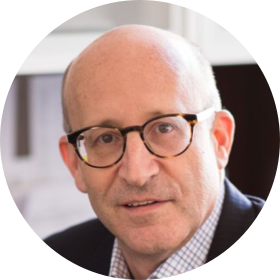Collaboration begins with sharing ideas in the spirit of all partners benefitting from what each brings to the table. In this episode of the Weekly Wisdom Podcast, Bridget Burns, CEO of the University Innovation Alliance (UIA), and Doug Lederman, Editor of Inside Higher Ed, examined pitching scalable ideas from a place of commonality, respecting the time and interest of leaders at other institutions, owning and remediating mistakes, and speaking with a collective voice.
The Best Framing for the Best Ideas in Higher Ed
When higher education leaders present their ideas and results at conferences, sharing perspectives on innovative practices and student success initiatives, the perceived value of their experience depends on how relevant it seems to their audience. As Mr. Lederman explained:
“There are differences between institutions: a research university a community college; a 1500-student private liberal arts college; a regional public institution with 15,000 people. They have some different priorities. What resonates and why? It’s worth talking about what you're seeing that gets in the way of campuses scaling each other's innovations.”
Dr. Burns observed that even the best ideas, and the noblest intentions of sharing them, can fall flat if they’re not pitched effectively:
“Regardless of the campus, it's the same problem. If you want other people to use your idea, I get it. You believe in the idea, fantastic. Do not tell me what you accomplish, because that is not helpful for me. Start with the problem. The problem is the invitation. Too often is that people start their pitch with, ‘I've done X with Y number of students.’ Both of those are telling you how I'm different than you. Focus on what you want to have in common. Do we share values? Do we have the same issues? Do we do the same work at all? That's what a listener is trying to validate. ‘What's in it for me’ is the basic question people in sales have to answer, right?
“Don't start by bragging. That makes me immediately pull back. And when you talk about the number of students you've served, if it's a large number, you think that you're validating your product, but you're telling me that you have more students than me. Instead of highlighting difference, start with, ‘We had this problem.’ Say it as simply as possible. Number two is, ‘We didn't know how to solve that problem.’ I need to know that you and I are similar that we both don't know how to solve that. The third step is, ‘Here are the things that we tried, and the reasons why they didn't work.’ Walk me through it, because it shows me that you didn't just come up with the idea, you're explaining the process that I might need. And the last thing is, ‘Here's why this might be working for us based on X, Y, and Z data.’ That architecture does not make me turn my ears off. I don't feel like you're trying to sell me something.”
Pitching to the Right Higher Ed Leaders in the Right Ways
Even though we’re talking about the world of higher ed, the model for pitching an idea is similar to best practices used in the world of marketing. Mr. Lederman compared it to his own conversations with advertisers:
“If you make it about you as the deliverer, I might not see how it's relevant to me. You think you have a solution, but if you start with that solution, you're just not going to land. Remember that most institutions have a lot more in common than they have differences, which is educating, training, and helping their students.”
Dr. Burns also noted that anyone receiving your pitch is investing time in listening to you, and that for the sake of efficiency (and courtesy), it really should be worth their time:
“Whose job do people think it is to vet your idea and see if it's any good? No one on campus is paid to just evaluate ideas. Possibly, you are being assumptive about whether they even have the same problem that you're trying to solve. You’re also not acknowledging what you are costing them just by the pitch. Frankly, it's people taking time away from their actual job of helping students, improving outcomes, or implementing complex solutions that are innovative. So, you owe it to them to make it easy to vet whether this is something that's worth their time. For me, I cannot stand when I get blind third-party intros. You have cost me 30 minutes, at least, because I'm going to be polite. Again, start with, ‘Do you have this problem?’ That way, I at least have a chance to protect my time.”
Building Trust With Authenticity
There’s no question that clarifying the results of a successful initiative and then pitching the idea to someone else can be hard work. Even if sharing your success isn’t quite bragging, it might be colored by a need for validation. Mr. Lederman suggested framing the effort as a component of the idea being shared:
“At the student success event we just did, I made the point about how uncommon it is for colleges and universities to apply the scientific method of experimentation and failure and trying again and trying a different thing. It's so uncommon for people to talk about what didn't work. And that might be one of the most significant changes we could see in higher education that could really move the needle: a willingness to acknowledge imperfection, the need for improvement.”
Dr. Burns agreed that showing vulnerability can be a part of the authenticity and trust required for collaboration and accepting new ideas:
“Early on, we discovered that you have to actually design your ecosystem to support vulnerability. We have Chatham House rules so you can share the idea that you hear: don't you dare repeat who said it or their institution. So, number one, you set a boundary that makes it safe. But second, the only way you get the microphone is if you're going to share a story about failure. And that is the ultimate gift. It's the only thing that's interesting. Our humanity is what connects us, not what we've achieved. And then I always try and get at least one to two people ready to show up in exactly the way we're looking for.”
She cited Georgia State’s Tim Renick, who is willing to tell the story of recognizing how poorly his institution was serving its Black student population:
“He acknowledged that nobody will just call it like it is and say, ‘It feels bad to do this job poorly, and what we were doing was not good, and it felt awful. We felt guilty.’ That is so relatable, and I immediately want to know more. And it's set up as a story. They start with the problem, and they start with them being the problem and have been very open and about the bumps along the way. Tim’s team and methodology are solid, so they have been able to make progress. But the structure starts with, ‘This was the problem.’”
Leaders Speaking With a Collective Voice
Of course, public vulnerability has its downside. Mr. Lederman wondered if higher ed leaders invite blowback by admitting to their shortcomings in the contentious climate of public life. However, he suggested:
“In general, we have a forgiving public, and they want to see places get better. I think as long as you have a plan for fixing the problem, maybe you don't start really talking about it until you've actually made some headway so that you can show you're heading in the right direction.”
Dr. Burns proposed the remedy of institutions proactively admitting the need to do better and outlining a course of action. She said:
“When you talk about vulnerability and sharing from failure, I recommend doing that in a community of practice. I don't recommend using that as the front headline, but I do think that when it comes to the strategy that would be appreciated. And then speaking with a collective voice, not just a single president. Candor is what the public wants. It's what policymakers want because we have a billion-dollar economic impact. Universities are about maximizing talent. We need everyone to reach their full potential in life, because the future of society requires that we step up. Telling the public that we haven't done enough and we have to do better, is what would be appreciated.”
Note: This interview in the Weekly Wisdom Series originally aired on November 14, 2023 as part of the University Innovation Alliance’s Innovating Together Podcast, appearing live on Facebook, Twitter, and LinkedIn.
Links Mentioned in This Episode
• Weekly Wisdom Podcast
• University Innovation Alliance
• Inside Higher Ed
• Chatham House rule (the practice of sharing information while keeping the source confidential)
• Tim Renick (Executive Director, National Institute for Student Success, Georgia State University)
Bios of Co-Hosts

Bridget Burns, Executive Director, University Innovation Alliance
Dr. Bridget Burns is the founding Executive Director of the University Innovation Alliance (UIA). For the past decade, she has advised university presidents, system chancellors, and state and federal policy leaders on strategies to expand access to higher education, address costs, and promote completion for students of all backgrounds. The UIA was developed during Bridget’s tenure as an American Council on Education (ACE) Fellowship at Arizona State University. She held multiple roles within the Oregon University System, including serving as Chief of Staff and Senior Policy Advisor, where she won the national award for innovation in higher education government relations. She was a National Associate for the National Center for Public Policy and Higher Education, and has served on several statewide governing boards including ones governing higher education institutions, financial aid policy, and policy areas impacting children and families.

Doug Lederman, Editor and Co-Founder, Inside Higher Ed
Doug Lederman is editor and co-founder of Inside Higher Ed. With Scott Jaschik, he leads the site's editorial operations, overseeing news content, opinion pieces, career advice, blogs and other features. Doug speaks widely about higher education, including on C-Span and National Public Radio and at meetings and on campuses around the country. His work has appeared in The New York Times and USA Today, among other publications. Doug was managing editor of The Chronicle of Higher Education from 1999 to 2003, after working at The Chronicle since 1986 in a variety of roles. He has won three National Awards for Education Reporting from the Education Writers Association, including one for a 2009 series of Inside Higher Ed articles on college rankings. He began his career as a news clerk at The New York Times. He grew up in Shaker Heights, Ohio, and graduated in 1984 from Princeton University. Doug and his wife, Kate Scharff, live in Bethesda, MD.
About Weekly Wisdom
Weekly Wisdom is an event series that happens live on Facebook, Twitter, and LinkedIn. It also becomes a podcast episode. Every week, we join forces with Inside Higher Ed and talk with a sitting college president or chancellor about how they're specifically navigating the challenges of this moment. These conversations will be filled with practicable things you can do right now by unpacking how and why college leaders are making decisions within higher education. Hopefully, these episodes will also leave you with a sense of optimism and a bit of inspiration.
Rate, Review & Subscribe
Learn why hundreds of people have rated this new podcast 5 stars! Please join others and rate and review this podcast. This helps us reach and inform more people -- like you -- to help increase the number and diversity of college graduates in the United States.
Click here, scroll to the bottom, tap to rate with five stars, and select “Write a Review.” Then be sure to let us know what you loved most about the episode! Also, if you haven’t done so already, subscribe to the podcast. We’ll be adding a bunch of bonus episodes to the feed and, if you’re not subscribed, there’s a good chance you’ll miss out.

